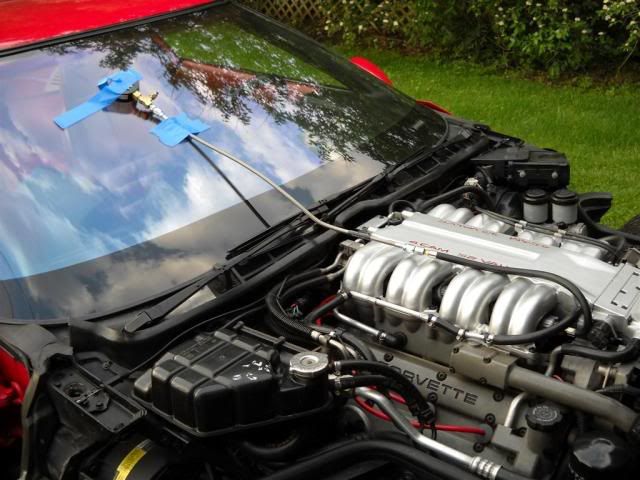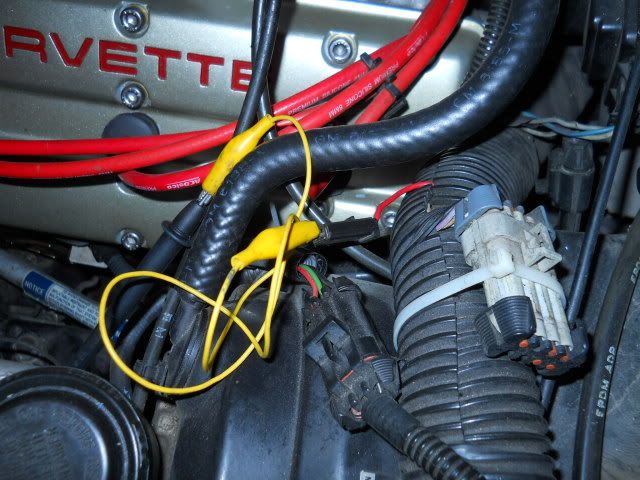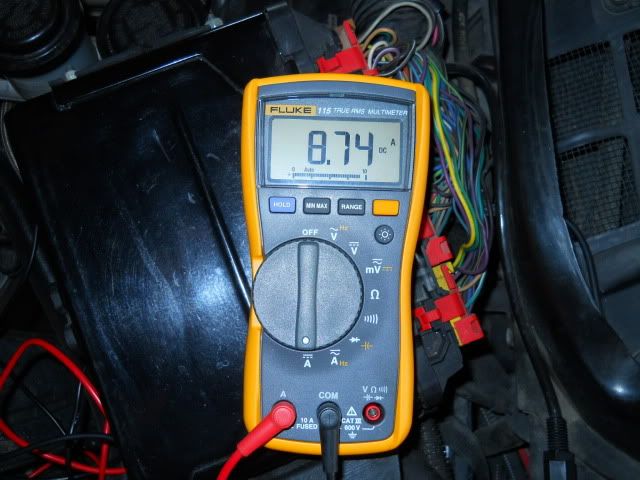Some things that caused my Z to fall on its nose...
FUEL...
Secondary fuel pump going south...
With pressure gauge hooked to the Schrader valve, and rolling the ignition switch on w/o starting the engine, both pumps should kick on for a second or two, and the pressure gauge may peak at high 40s or even above 50# before settling at mid 40s. Pressure should hold to a pound or so of that for (some say) 30 minutes. (A brand new secondary pump had a bad check valve on the first one I replaced. Take nothing for granted).
Taping a pressure gauge to the windshield put the finger on another problem I had which turned out to be a filter that was clogged.

Pressure should be: Mid 40s at cruise, 52#± at WOT - all the way to 7000+
You can also activate both fuel pumps and by measuring the current draw, determine if one of the pumps (or both) are not working, again coupled with a fuel pressure gauge attached to the Schrader.
Inboard of the diagnostic connector, near the brake reservoirs, there is a red wire poking out of the wire loom about an inch with a connector on it. With the ignition switch OFF, taking a current reading between the pos post of the battery and that connector (through a VOM set up to read 10A), you should read between 8 to 10A for both pumps. A reading half that indicates one or the other is not working.

Note the alligator clip lead connecting the red test connector to the BLACK lead of the meter. The Red lead goes to the POS on the battery
In this case, both pumps are working normally.

The resistance of the injectors should be checked when the engine is at normal operating temperatures. Quite often an electrical coil will read normally at room temp, but the failure doesn't manifest itself until heat is in the mix.
If there is an easier way to measure injector resistance besides accessing the relay batch connector, I'm all ears. But, in reality, it is pretty easy to do, and if you don't have a factory service manual (see if the owner has one), I or someone here can dig up the pin-out procedure for measuring the injector resistance w/o pulling the plenum or unplugging the injectors.
Anyways, injectors that are OK will read within a range of a couple ohms or less, across all 16. Injectors reading 10 ohms are suspect, and if they go as far as 7-8 ohms or less, you can expect trouble with idle and smooth operation on the one hand, and poor performance or even burning a valve (worst case...Ask me how I know!).
AIR...
Falling on its nose at WOT, around 4500-55000 or so rpm might be the plastic accordion tube collapsing that is connecting the air horn with the air filter box. The fix is as simple as wire hoops placed between the pleats of the tube - 4 spread across the middle should do it - or fashioning an aluminum sleeve that fits snuggly inside the tube (my favorite).
It IAC valve on the passenger side of the throttle body needs to be checked for carbon and be cleaned as needed.
Idle that remains high (1800-2200, for example) after 5 seconds or so is usually due to air leaking past a gasket or that IAC valve or a hose e.g., the brake booster not connected.
The vacuum pump typically runs for under 5 seconds when turning the switch to ON, and then shuts off. If it cycles on then off after about 10 seconds, there is a leak, but not serious enough to impair the SPT operation, due to lack of vacuum.
Far as the Secondary Port Throttles go,
Marc Haibeck's web site has a tech article describing how to check them without pulling the plenum.
Note: The fact that the SPTs can be eliminated with minimal negative affect on the total operation, makes removing them an option, especially if parts are not available, or as part of a porting project. However, a chip that is modified to operate all 16 injectors full time is required, and you NEVER want to switch the POWER switch away from the FULL POWER setting...extremely important! (I shunted my (90) switch against accidents or internal switch connection issues.)
SPARK...
Spark issues, as you are well aware, can be wires, plugs, or coils...or in the case of the LT5, the ECM or DIC. But, first things first:
The LT5 uses a waste spark ignition, i.e., each coil fires a pair of plugs each, at the same time. Tho you can pull a boot off of each plug while the engine runs to find a cylinder(s) not firing, beware of mouse-chewed plug wires in the vicinity of the coils!! Marc Haibeck (one of the ZR-1 specialists in the Chicago area) warns that the wire harness to the ECM runs back there too, and if a mouse nipped a pin-hole in one of the plug wires, it might be impossible to see, but could zap the ECM harness, and then you'd have a BIG problem. I've checked my plugs this way, I admit, but I also had new plug wires (after mice chewed my original wires).
Coils too exhibit failure when hot, yet when comparing resistance of the primary and secondary sides of the coils when cool, they may all be more or less equal. Failure only when hot is a classic coil/winding phenomenon, in my experience, beit windings of coils or of motors!
Note: Replacing an item does not eliminate it as being at fault. Brand new chit is bad out of the box. The trap people get into is assuming because a faulty piece was replaced that that device can be eliminated from suspicion. BULL PUCKY! Never assume! Nothing is known but what we verify...is a golden (troubleshooting) rule.
That said, and a coil (for example) is replaced, yet the problem still remains with that cylinder(s), and swapping coils with one known to be working does not fix the problem, then just for peace of mind, I'd want to verify that none of the injector wires got pinched (happens often enough), and a compression check does not indicate anything drastic (e.g., valve issue, for example). If the problem still exists, then swapping the ECM with a known good one would be in order.
Oh, and one other thing that bites people is bending one of the many pins on that large connector going to the DIC that has the snugging bolt in the middle of it. Much care needs to be exercised when reconnecting that connector especially. (also goes for ANY connector, but those connected to the ECM too are especially touchy.) Also, while I'm on it, you never want to jam a test probe into the female sockets in the ECM (or any) connector, as they are easily damaged to where they won't grip the pins afterward.
Summarizing...
This is rather cursory, I admit. More info will narrow the focus (for all of us). Something should come out of this, I would think. But, the one thing I've not seen mentioned here is executing a data logging test. That way real-time sensor data can be analyzed and plotted that will show stuff even before a code is set; especially if the problem is intermittent or of short duration. Do you have a laptop with data logging capabilities??
Hope this helps.
P.